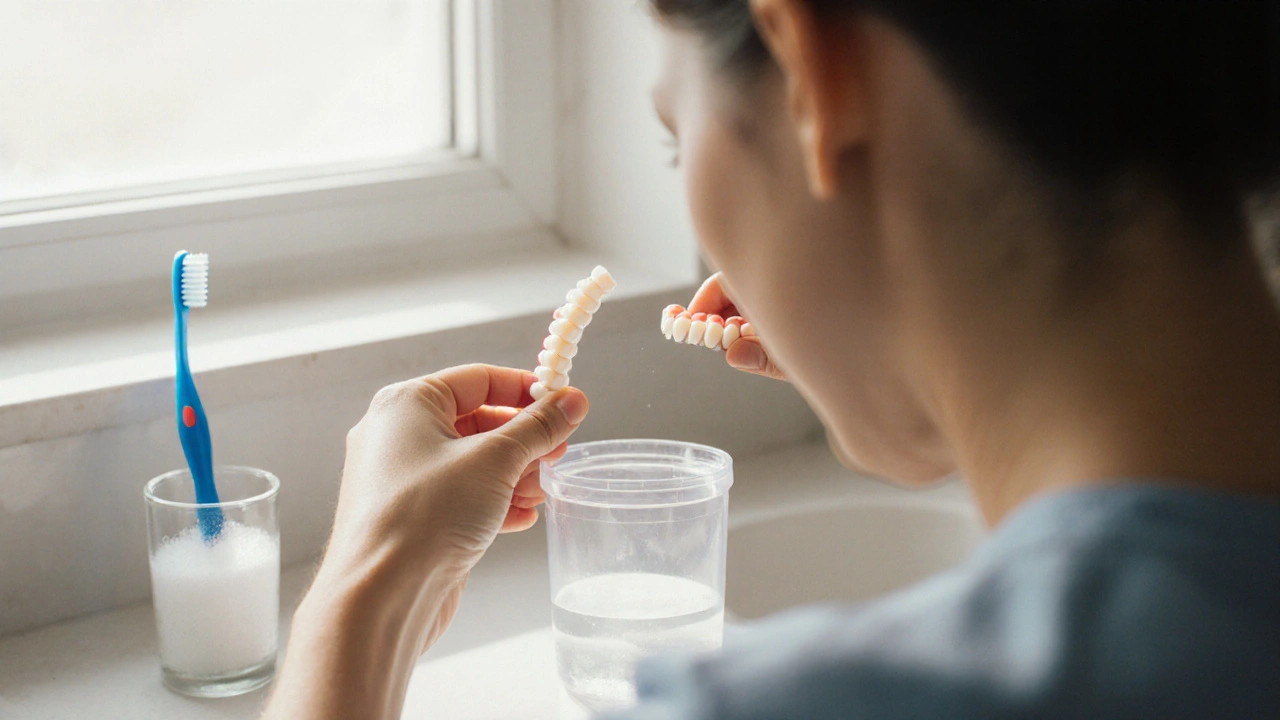
Jak přilepit zubní můstek - krok za krokem a co dělat, když vám spadl
Když vám spadl zubní můstek, neřešte ho sami. Zjistěte, proč se uvolňuje, co dělat hned teď a jak se vyhnout opakování. Víte, kdy je čas přemýšlet o implantátech?
When you have a zubní můstek, trvalou zubní protézu, která nahrazuje chybějící zuby a je upevněna na sousední zuby. Also known as zubní náhrada, it restores your ability to chew, speak, and smile naturally—but only if it’s properly secured. A poorly fixed bridge doesn’t just feel uncomfortable—it can lead to pain, infection, or even loss of the supporting teeth. Many people think once the můstek is placed, the job is done. But the real work starts after installation: maintaining the fixace můstku over time.
The stability of a dental bridge depends on three things: the health of the anchor teeth, the quality of the cement used, and how well you care for it daily. If the supporting teeth develop decay or gum disease, the whole structure can loosen. That’s why regular check-ups with a zubní lékař, specialista, který kontroluje stav zubů, dásní a upevnění protéz are non-negotiable. Even if your bridge feels fine, plaque can hide under it and rot the teeth underneath—slowly, silently, and painfully.
Common signs your bridge isn’t fixed properly? A wobbly feeling when you bite, food getting stuck constantly, bad breath that won’t go away, or sensitivity around the anchor teeth. These aren’t normal. They’re red flags. A loose bridge isn’t just inconvenient—it’s a health risk. Bacteria thrive in gaps, and over time, that can lead to bone loss, gum recession, or even the need to remove the entire structure.
Some people try to fix a loose bridge themselves with over-the-counter adhesives. Don’t. Those products are designed for temporary dentures, not fixed bridges. They can trap bacteria, damage the supporting teeth, or make the final repair harder—and more expensive. Only a zubní protéza, celkový systém nahrazující chybějící zuby, včetně můstků, korunek a implantátů specialist can assess whether your bridge can be re-cemented or if it needs replacement.
Good oral hygiene is your best defense. Brushing twice a day isn’t enough—you need to clean under the bridge. Floss threaders, interdental brushes, or water flossers are essential tools. Skipping this means you’re feeding bacteria right under the bridge, where your toothbrush can’t reach. It’s not about being perfect—it’s about being consistent.
And yes, even a well-made bridge has a lifespan. Most last 10–15 years, but with great care, some last decades. The key isn’t the material—it’s the maintenance. Your upevnění můstku, proces a technika, jak zubní můstek trvale připevnit k podkladovým zubům matters just as much as the initial placement.
In the posts below, you’ll find real-life experiences and expert advice on what happens when fixace můstku fails, how to spot early warning signs, and what steps to take before it turns into a bigger problem. You’ll learn what dentists actually recommend for cleaning under bridges, why some materials last longer than others, and how to avoid common mistakes that lead to costly repairs. This isn’t theory—it’s what works for people who keep their bridges for years without issues.

Když vám spadl zubní můstek, neřešte ho sami. Zjistěte, proč se uvolňuje, co dělat hned teď a jak se vyhnout opakování. Víte, kdy je čas přemýšlet o implantátech?